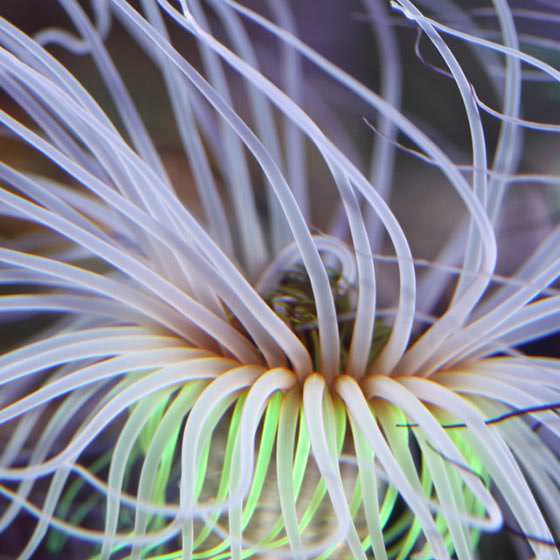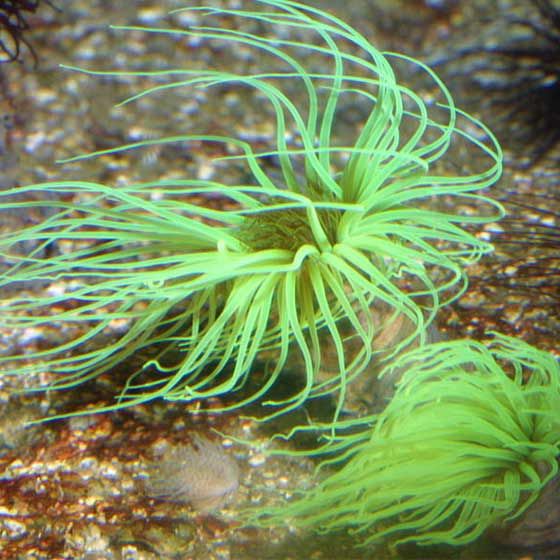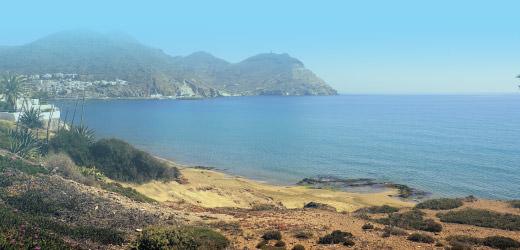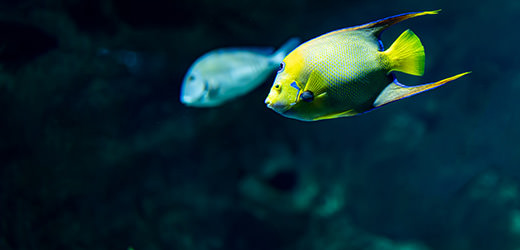Biology and food
The tube anemone is similar to sea anemone. At its top end, it has more than 200 tentacles arranged in rings around its mouth. There are two different types of tentacles, in different colours.
The longer ones are around the outside, with the shorter ones closer to the mouth. To feed, the tube anemone uses its long tentacles to capture zooplankton. They then pass the food along to its shorter inner tentacles and on to the mouth.




